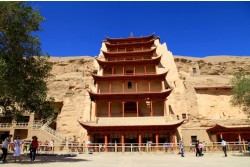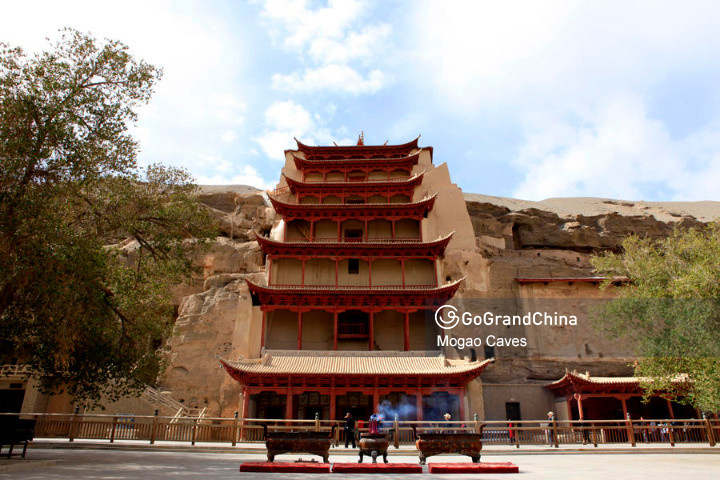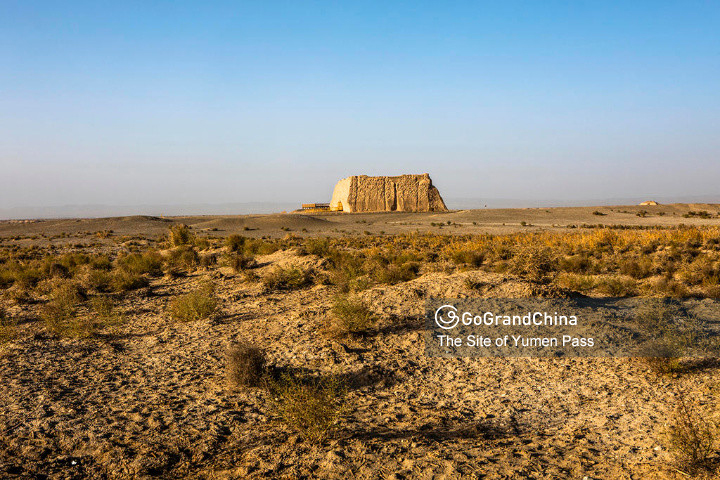

Introducing UNESCO World Heritage Sites in Dunhuang
Dunhuang & its surrounding areas have a total 3 cultural and natural places inscribed on the UNESCO World Heritage List as of 2020. The Mogao Caves became the UNESCO World Heritage Sites in 1987. The Site of Yumen Pass and the site of Xuanquan Posthouse were listed World Heritage Sites under "Silk Roads: the Routes Network of Chang'an-Tianshan Corridor" in 2014. If you happen to be in Dunhuang or anywhere else in Gansu province, be sure to drop by these amazing UNESCO World Heritage Sites. Each of Dunhuang's UNESCO World Heritage Site has a tale to tell. Book GoGrandChina tour packages to learn the tales of Dunhuang's UNESCO World Heritage Sites at the most affordable prices.
Mogao Caves
Carved into the cliffs above the Dachuan River, the Mogao Caves south-east of the Dunhuang oasis, comprise the largest, most richly endowed, and longest used treasure house of Buddhist art in the world. It was first constructed in 366AD and represents the great achievement of Buddhist art from the 4th to the 14th century. 492 caves are presently preserved, housing about 45,000 square meters of murals and more than 2,000 painted sculptures. Cave 302 of the Sui dynasty contains one of the oldest and most vivid scenes of cultural exchanges along the Silk Road, depicting a camel pulling a cart typical of trade missions of that period. Caves 23 and 156 of the Tang dynasty show workers in the fields and a line of warriors respectively and in the Song dynasty Cave 61, the celebrated landscape of Mount Wutai is an early example of artistic Chinese cartography, where nothing has been left out – mountains, rivers, cities, temples, roads and caravans are all depicted. Get more about the Mogao Caves.

The Site of Yumen Pass
The Site of Yumen Pass is the most important pass set by the Han Empire from the 2nd century BC to the 3rd century AD on the west end of Hosi Corridor; located in the Gobi desert on the southern bank of the Shule River west to the Qilian Mountains, geographically, it served as a landmark dividing the east and west transport. As the best preserved and most intact ancient pass heritage of sufficiently large scale, the Site of Yumen Pass witnessed the transport management system, beacon tower system and Great Wall defense system as part of the comprehensive transport support system built by the Han Dynasty of China, and exemplified how it supported the long-distance transport and interchange along the Silk Roads. Get more about the Site of Yumen Pass.

The Site of Xuanquan Posthouse
The Site of Xuanquan Posthouse refers to the remains of an important courier station in the Hosi Corridor built in the Han Dynasty during 2nd century BC and 3rd Century AD, located in the Gobi desert to the north of Huoyan Hill, which is an offshoot of Qilian mountains. The heritage has a complete structure, and a large number of Chinese documents written in bamboo and wooden slips from Han Dynasty were unearthed there, recording the postal system in the large transportation system of the Han Empire. These documents witnessed how the Xuanquan Posthouse guaranteed the transportation and communication along the Silk Roads.